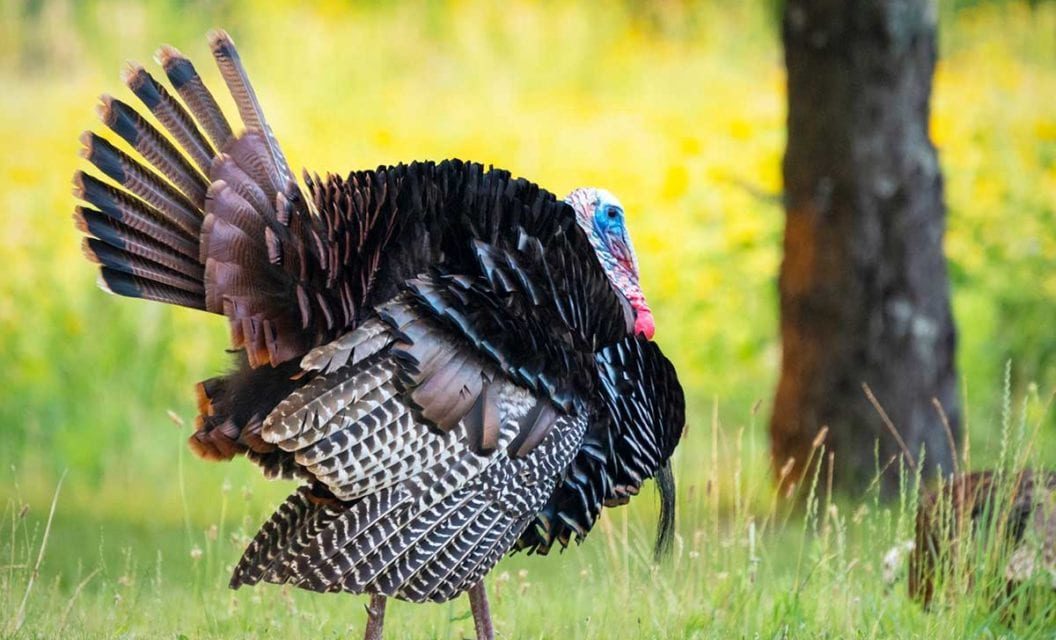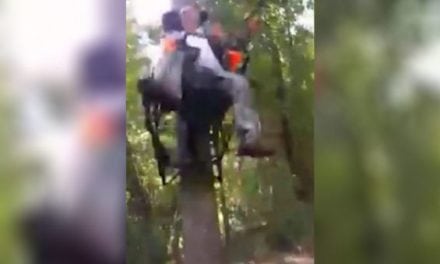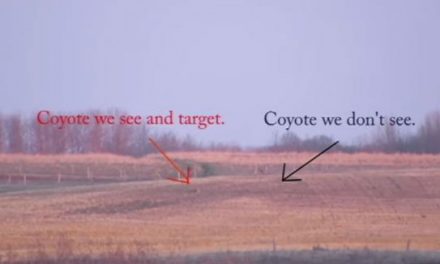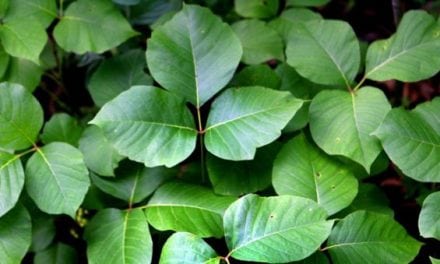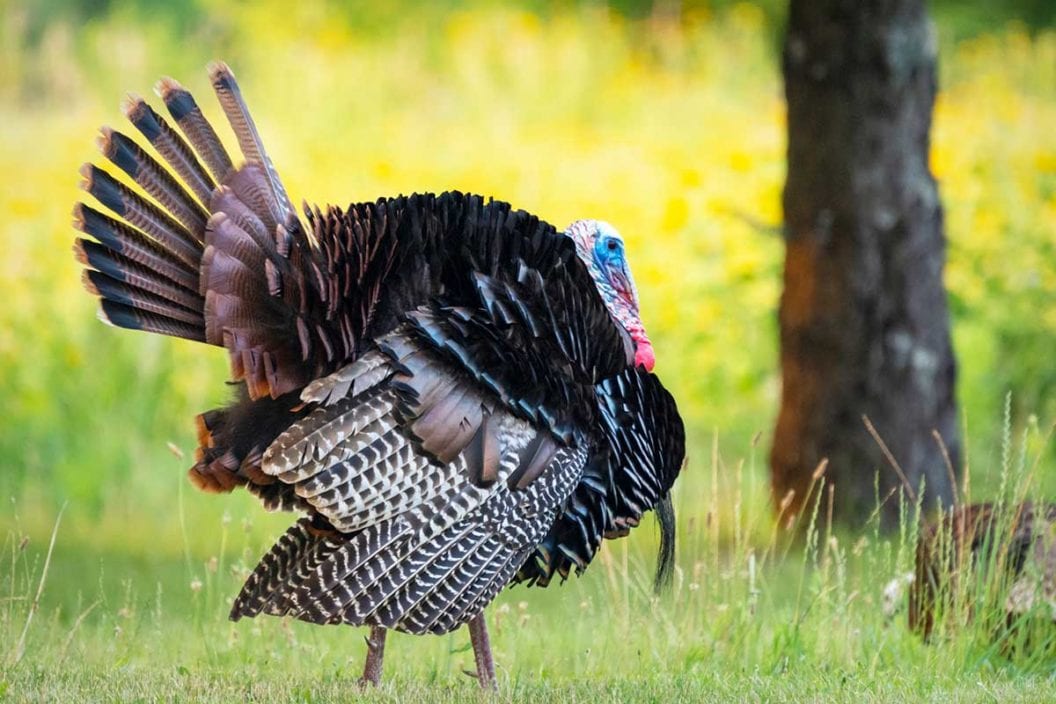
Consistently named one of the best places to chase turkeys, Wisconsin boasts liberal limits, a unique season structure, and millions of public land acres.
While wild turkey populations across the country have seen dips in recent years, Wisconsin appears to hold steady with consistently strong numbers and solid wildlife management.
Hunters flock to the Badger State each spring in search of longbeards — here’s why.
Wisconsin Turkey Population & History
Wild turkeys roamed much of Wisconsin in the 1800s, but overhunting and habitat loss left them virtually nonexistent in the state by 1871. More than a century later, the Wisconsin Department of Natural Resources (DNR) and the National Wild Turkey Federation partnered to reintroduce birds in 1974. The wild turkeys, originally from Missouri, took hold of prime habitat in the southwest portion of the state.
After years of successful relocation programs, the wild turkey population began to thrive all across Wisconsin. Thanks to these efforts, Wisconsin reinstated a spring turkey season in 1983 and added a fall season in 1994.
Based on recent estimates, the state of Wisconsin now has a healthy population of eastern wild turkeys of around 350,000. The Badger State issues close to 245,000 tags each year, but the bulk of them remain unfilled. For the 2021 spring gobbler season, the Wisconsin DNR reported a total harvest of 37,266 birds and a hunter success rate of 16.9 percent.
Wisconsin grows them big, too. The state has a lot of entries in the NWTF record books, and two counties in the state are listed within the top 20 for biggest birds.
Wisconsin Turkey Hunting Seasons & Licenses
Wisconsin’s turkey season model varies from many surrounding states, but leaves the door open for dedicated hunting in a single area from week to week.
Rather than one long season throughout the state for all hunters, Wisconsin splits the spring into six different seasons lettered A through F, and seven separate turkey hunting zones. The season usually runs from mid April to the end of May.
When applying for the lottery, hunters can list their preferred seasons and zones. The deadline to apply for the spring season is typically in December. Once the Wisconsin DNR draws applicants, they’re notified of which season/zone combinations they’ve been awarded. Any permits left over after the lottery — called bonus harvest authorizations — go on sale over the counter on a first come, first serve basis until they’re sold out. Hunters are limited to purchasing one per day.
For fall, Wisconsin has one to two seasons, and the application deadline is usually in March. For the 2021-2022 fall turkey season, hunters had nearly four months to fill tags between mid September and early January.
Hunters can tag bearded hens or Toms in the spring, while birds of any sex are fair game in the fall.
Here are the 2022 Wisconsin spring turkey dates:
- Youth Hunt: April 16-17
- Period A: April 20-26
- Period B: April 27 – May 3
- Period C: May 4 – 10
- Period D: May 11 – 17
- Period E: May 18 – 24
- Period F: May 25 – 31
The application fee is only $3 for both resident and non-resident hunters. Spring turkey licenses ring in at $60 for out of staters, while resident adults pay just $15. Turkey stamps are $5.25. Spring turkey harvest authorization bonuses are $10 for residents and $15 for non-residents.
Wisconsin Turkey Hunting Land & Regulations
Even for out of state hunters or residents who don’t have access to private hunting land, Wisconsin is a great turkey state. With over 7 million acres of public land and available resources for locating a spring gobbler spot, Wisconsin provides plenty of opportunities for any hunter. If you’d prefer a fully guided hunt on private land, Wisconsin is also home to several hunting outfitters.
Wisconsin allows turkey hunters to use shotguns, crossbows, and vertical bows. Generally, hunters cannot use any type of electric calls or decoys, hunt turkeys in the spring with the help of dogs, or bait birds (although hunting near ag fields and foot plots is legal). Some special regulations and exceptions are in place for youth and disabled hunters.
Hunters must register all harvests via phone or online by 5:00 p.m. the following day. Like most states, Wisconsin has a comprehensive list of rules and regulations that can change from year to year, so be sure to check the latest updates before heading into the field.
Special Seasons & Programs
Wisconsin’s Mentored Hunting Program gives first time hunters the opportunity to try out the sport without first completing a hunter education course. Experienced, licensed hunters can take out an individual born on or after January 1, 1973 to show them the ropes. The mentee must still obtain a hunting license and harvest authorization, plus stay within arm’s reach of the mentor the entire hunt.
Youth hunters in Wisconsin under age 16 have access to a two-day youth season in mid April before the rest of the seasons kick off. The youth hunt is open to both residents and non-residents, but youth hunters must be accompanied by a licensed adult 18 or older. Youth hunters must still purchase a spring turkey license, stamp, and harvest authorization to participate — but they are available at a reduced cost.
Wisconsin hunters with a Class A, B, or C disabled permit can apply for the state’s Wild Turkey Hunt for People with Disabilities, which takes place on designated private land only.
Wisconsin’s Learn to Hunt Program provides participants with a well rounded hunting education outside the normal season. With a combination of classroom and in field instruction often facilitated by conservation clubs, the program teaches students hunting tactics and safety information.
All in all, Wisconsin is a great place to chase thunder chickens. When asked where in the U.S. he’d prefer to hunt, former turkey calling champion Shane Simpson said, “The obvious choice for me would be Wisconsin. That state has a healthy population of turkeys, vast amounts of publicly accessible lands, inexpensive non-resident tags, and liberal limits. Wisconsin has all of that and its turkey population is made up of Eastern wild turkeys, which is my favorite subspecies to pursue.”
NEXT: NEBRASKA TURKEY HUNTING SEASONS, LICENSES, AND MORE
The post Wisconsin Turkey Hunting: How and Where to Do It appeared first on Wide Open Spaces.

